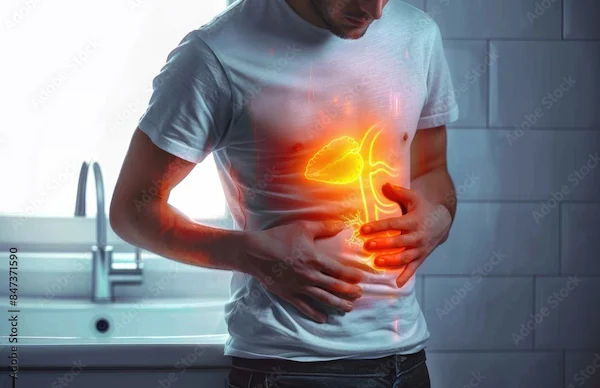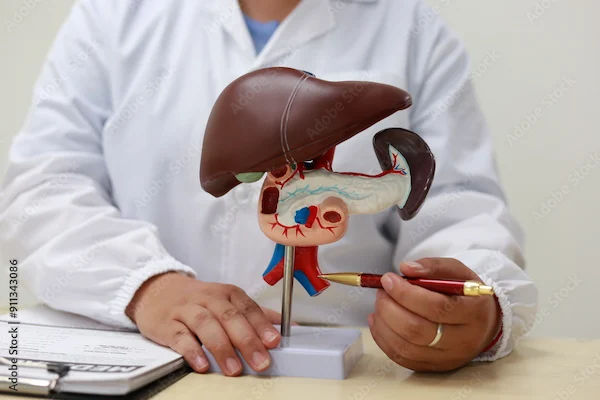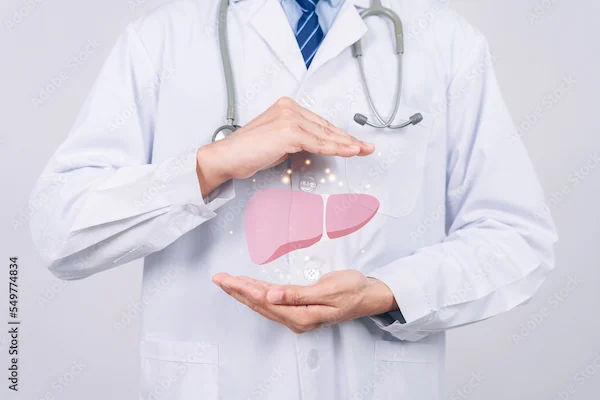Preventing Hepatitis: Causes, Symptoms And Prevention Of Hepatitis
Discover the causes, symptoms, and effective prevention strategies for hepatitis. Learn how to reduce your risk and protect your liver from the different types of hepatitis through vaccination and healthy habits.

Written by Dr.Sonia Bhatt
Last updated on 3rd Jul, 2025

Hepatitis is a condition characterised by inflammation of the liver, often caused by viral infections. However, it can also result from other factors such as autoimmune disorders, certain medications, drug use, toxins, or excessive alcohol intake. Autoimmune hepatitis arises when the immune system mistakenly targets the liver with antibodies.
There are five primary types of viral hepatitis: A, B, C, D, and E, each linked to a specific virus. The World Health Organization (WHO) estimates that a significant number of individuals globally live with chronic hepatitis B and C.
Causes and Risk Factors of Hepatitis
Hepatitis can result from a variety of causes, including infections, toxins, and autoimmune disorders. Understanding the specific type of hepatitis and its risk factors is essential for prevention, early diagnosis, and effective treatment. Common routes of transmission for different types of hepatitis includes:
| Type of Hepatitis | Common Route of Transmission |
| Hepatitis A | Consuming food or water contaminated with the hepatitis A virus (HAV). |
| Hepatitis B | Exposure to body fluids containing the hepatitis B virus (HBV), such as blood, vaginal secretions, or semen. |
| Hepatitis C | Contact with body fluids infected with the hepatitis C virus (HCV), such as blood, vaginal secretions, or semen. |
| Hepatitis D | Contact with blood infected with the hepatitis D virus (HDV). |
| Hepatitis E | Consuming food or water contaminated with the hepatitis E virus (HEV). |
Causes of Non-Infectious Hepatitis:
Alcohol and Other Toxins
Excessive alcohol intake can lead to liver damage and inflammation, a condition often referred to as alcoholic hepatitis. Alcohol can directly damages liver cells, and prolonged misuse can result in permanent damage, including scarring (cirrhosis) and, ultimately, liver failure. Other toxic causes of hepatitis include the misuse of medications and exposure to harmful substances.
Autoimmune Response
In some instances, the immune system mistakenly identifies the liver as foreign and attacks it. This triggers ongoing inflammation, which can vary in severity and impair liver function. Autoimmune hepatitis is approximately three times more prevalent in women than in men.
What are Symptoms of Hepatitis?
Symptoms of hepatitis typically appear within 14–28 days. In chronic forms of the condition, such as hepatitis B and C, symptoms may not become apparent until liver function is significantly impaired. Conversely, individuals with acute hepatitis often develop symptoms shortly after being infected with the virus.
Common Symptoms of Infectious Hepatitis includes:
Fatigue
Flu-like symptoms
Dark urine
Pale stools
Abdominal pain
Loss of appetite
Unexplained weight loss
Yellowing of the skin and eyes (jaundice)
Many individuals, however, do not exhibit any symptoms. Most people recover fully within a few weeks to several months and gain immunity to the virus thereafter. It is worth noting that children under the age of six typically do not show symptoms.
Diagnosis of Hepatitis
Healthcare professionals use a series of tests to identify the underlying cause of the condition.
1. History and Physical Examination
The diagnostic process typically begins with a review of your medical history to identify potential risk factors. During a physical examination, the doctor may gently press on your abdomen to check for pain or tenderness. They may also assess for signs of liver swelling and jaundice (yellowing of the skin or eyes).
2. Liver Function Tests
Blood samples are analysed to evaluate how well your liver is functioning. Abnormal results may indicate liver stress, damage, or dysfunction, even in the absence of visible symptoms during a physical exam. Elevated liver enzyme levels are often the first clue of a liver issue.
3. Other Blood Tests
If liver function tests reveal abnormalities, additional blood tests may be performed to identify the underlying cause. These tests can:
Detects hepatitis viruses or antibodies that indicate an infectious cause.
Identify autoimmune hepatitis by testing for specific markers.
4. Liver Biopsy
To assess liver damage, a liver biopsy may be recommended. This involves extracting a small tissue sample from the liver using a needle inserted through the skin. The procedure is minimally invasive and typically guided by an ultrasound scan. The biopsy helps determine the extent of infection or inflammation affecting the liver.
5. Ultrasound
An abdominal ultrasound uses sound waves to create detailed images of the liver and nearby organs. It provides valuable information about:
Fluid in the abdominal cavity.
Liver enlargement or damage.
Liver tumours.
Abnormalities in the gallbladder.
Methods for Preventing the Transmission of Hepatitis
The transmission of hepatitis varies depending on the specific type. Regular screening for hepatitis A, B, and C is recommended for individuals at higher risk, and doctors routinely screen for hepatitis B and C during pregnancy.
1. Hepatitis A and E
They are primarily transmitted through food and water contaminated with the faeces of an infected individual. Vaccination against hepatitis A is available and is especially recommended for individuals travelling to areas where the virus is common.
Preventative measures include:
Washing hands thoroughly after using the toilet and before meals.
Ensuring food is properly cooked and stored safely.
Drinking bottled or properly treated water when travelling.
Avoiding or peeling fruits and vegetables that might have been washed or grown in unsanitised water.
2. Hepatitis B, C, and D
Vaccination is available for hepatitis B, which can be beneficial for those at high risk, but there is currently no vaccine for hepatitis C. To reduce the risk of transmission for hepatitis B, C, and D, it is advisable to:
Discuss any known infections openly with sexual partners.
Use condoms during sexual intercourse.
Only use new, sterile needles for injections.
Avoid sharing personal items like toothbrushes, razors, or manicure tools.
Ensure that tattoo or acupuncture equipment is sterilised.
3. Special Considerations for People Living with HIV
People with HIV are at a higher risk of contracting hepatitis B or C, and the impact can be more severe due to a weakened immune system. To lower the risk of infection and complications, individuals with HIV should:
Follow precautions to prevent hepatitis transmission.
Attend regular health check-ups.
Adhere to their prescribed treatment plan.
Vaccination and Immunisation
Vaccination plays a vital role in preventing certain types of hepatitis. Immunisation is available for hepatitis A and B, but not for hepatitis C. While treatment exists for hepatitis B and C, no specific treatment is available for hepatitis A.
Hepatitis A: A vaccine is available to protect against hepatitis A (HAV). This vaccine is administered in two doses, typically starting when children are between 12 and 23 months old. It is also suitable for adults and may be combined with the hepatitis B vaccine in some cases.
Hepatitis B: New-borns are recommended to take hepatitis B vaccine. Doctors usually administer the series of three doses within the first six months of life. Vaccination is also advised for healthcare and medical personnel due to their increased risk of exposure. Additionally, the hepatitis B vaccine can help prevent hepatitis D, as the latter requires the presence of the hepatitis B virus to infect a person.
Hepatitis C and E: Currently, there are no vaccines available for hepatitis C or hepatitis E.
Lifestyle and Dietary Measures
Liver conditions can affect how the body processes nutrients. To support recovery, a diet rich in protein, carbohydrates, and moderate fat is recommended
1. Dietary Guidelines:
Diet should include ample amounts of fruits, vegetables, lean protein, and whole grains.
Reduce the intake of fatty foods, salt, and sugar.
Opt for small, frequent meals rather than three large ones.
Avoid junk food, preservatives, alcohol, and carbonated drinks.
Stay hydrated by drinking plenty of water to help the liver eliminate toxins effectively.
2. Exercise and Lifestyle:
Regular exercise can improve strength and help combat depression
30 minutes of moderate physical activity five days a week is recommended.
It is advisable to consult a doctor before starting any exercise programme to ensure it is safe for your condition.
3. Alcohol Consumption:
Alcohol is harmful to the liver and poses significant risks for individuals with hepatitis or other liver conditions.
Preventative Practices in Healthcare Settings against Hepatitis
To prevent the transmission of hepatitis below steps can be taken in the healthcare setup:
Vaccinating healthcare staff
Wearing PPE such as gloves, masks, and eye protection when handling bodily fluids.
Handle and dispose of needles and sharps safely.
Sterilise reusable medical equipment and dispose of single-use items correctly.
Screen blood and organ donations for hepatitis before use.
Educate staff on infection control and inform patients about risks.
Follow infection control protocols when handling blood and bodily fluids.
Administer post-exposure prophylaxis (PEP) for hepatitis B; seek immediate medical advice for hepatitis C exposure.
Monitor and report exposures to ensure timely medical intervention.
Challenges in Hepatitis Prevention and Future Directions
Hepatitis prevention faces several challenges including:
Access to Care: Many individuals lack access to testing, treatment, or vaccines.
Cost: Hepatitis treatments can be expensive, making them unaffordable for some patients.
Lack of Awareness: Both healthcare providers and the public may not fully understand how to diagnose, manage, or prevent hepatitis.
To address these challenges, future efforts should focus on:
Improving Access: Ensure that people have access to testing, treatment, and vaccines.
Increasing Awareness: Educating both the public and healthcare personnel about hepatitis.
Enhancing Treatment: Develop more effective and affordable treatments.
Improving Screening: Prioritise screening for hepatitis, especially among at-risk groups.
Advancing Prevention: Developing new vaccines and strategies to reduce transmission
Conclusion
There are five types of hepatitis viruses, each with distinct characteristics. The outlook for individuals with hepatitis depends on the type, whether symptoms are present, and whether treatment is sought. Some individuals may not be aware they have chronic hepatitis until liver failure occurs. Recovery chances vary depending on the hepatitis type. Those who suspect they have hepatitis should consult a healthcare professional promptly.
Consult Top Hepatologists
Consult Top Hepatologists

Dr. Srinivasa Reddy
Hepatologist
12 Years • MBBS, MD (General Medicine), DM (Hepatology),ASGE
Hyderabad
Myra Liver & Gastro Care, Hyderabad

Dr. E Prabhakar Sastry
General Physician/ Internal Medicine Specialist
40 Years • MD(Internal Medicine)
Manikonda Jagir
Apollo Clinic, Manikonda, Manikonda Jagir
(125+ Patients)

Dr. Sushith C
General Physician
2 Years • MBBS
Bengaluru
PRESTIGE SHANTHINIKETAN - SOCIETY CLINIC, Bengaluru

Dr. Kumaragurubaran. S
Hepatologist
0 Years • MBBS.,MD.,FPIC.,DM.,
Tiruchirappalli
Apollo Speciality Hospitals Old Palpannai, Tiruchirappalli
(25+ Patients)

Dr. Aswin S. Krishna
Hepatologist
10 Years • MBBS, MD (Internal Medicine,MMC), DM (Hepatology, MMC), PDF(Fellowship in Liver Transplanatation)
Chennai
Apollo Hospitals Greams Road, Chennai
(100+ Patients)
.webp)



